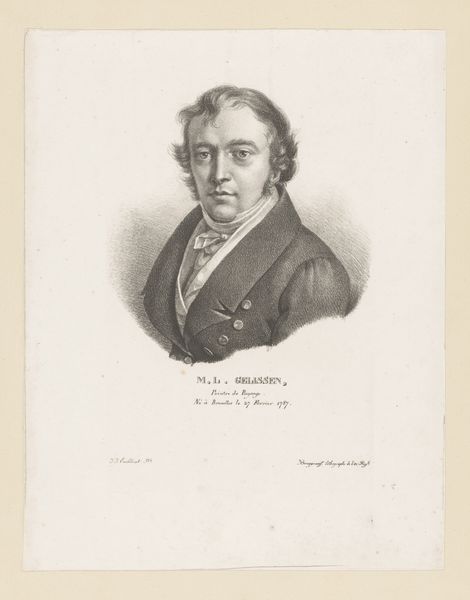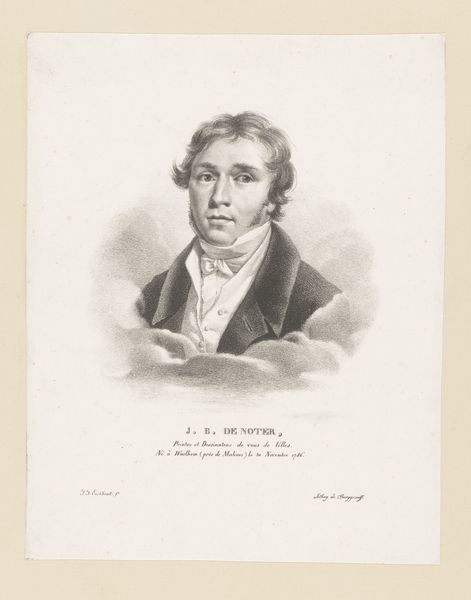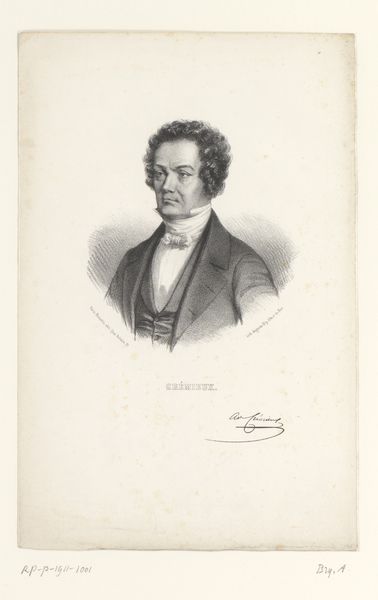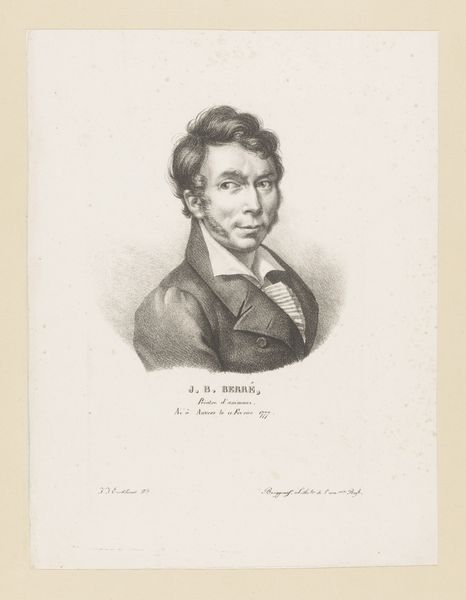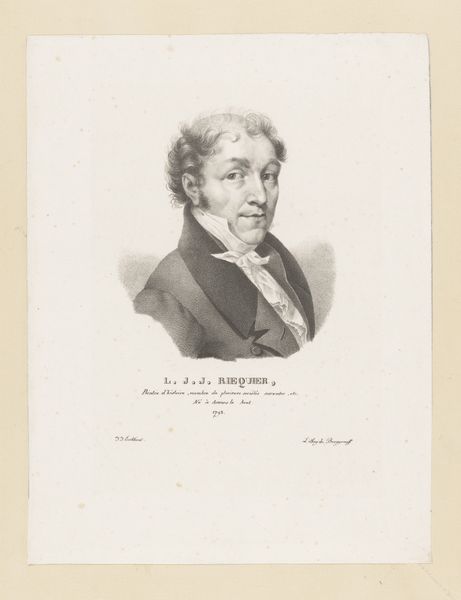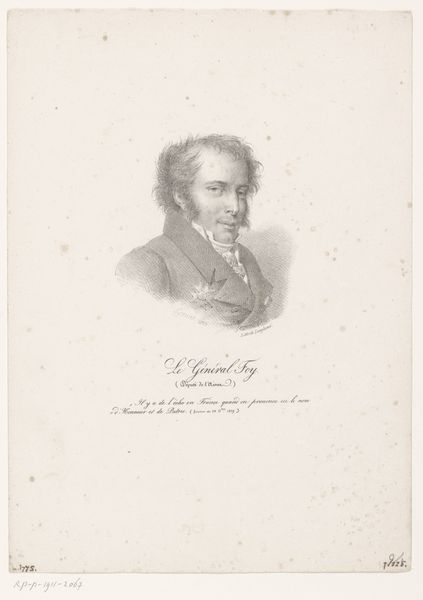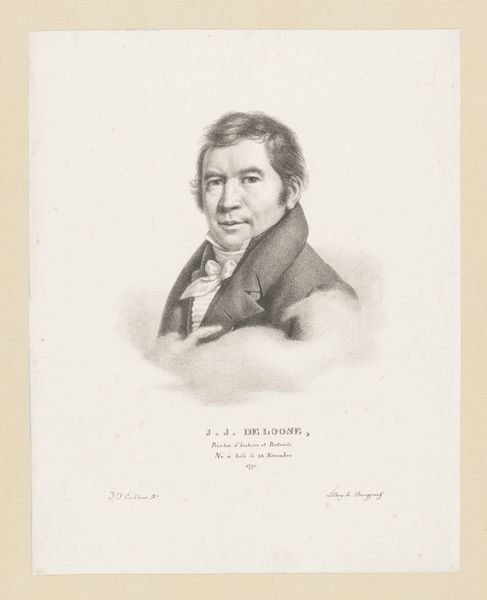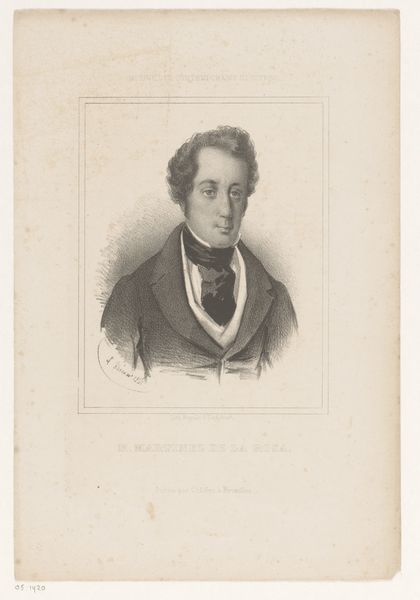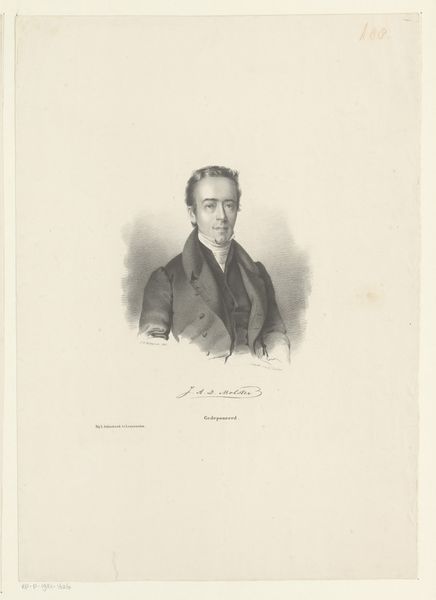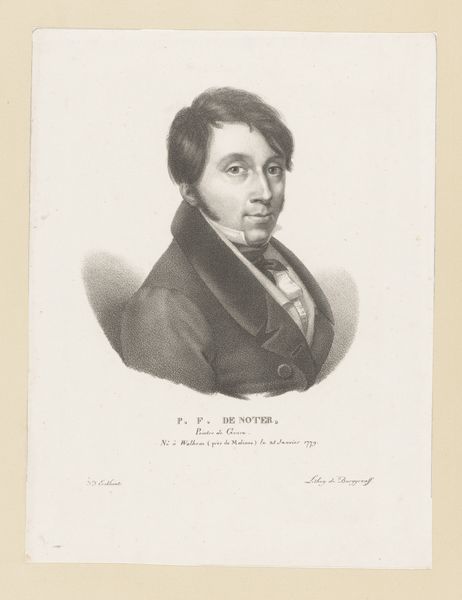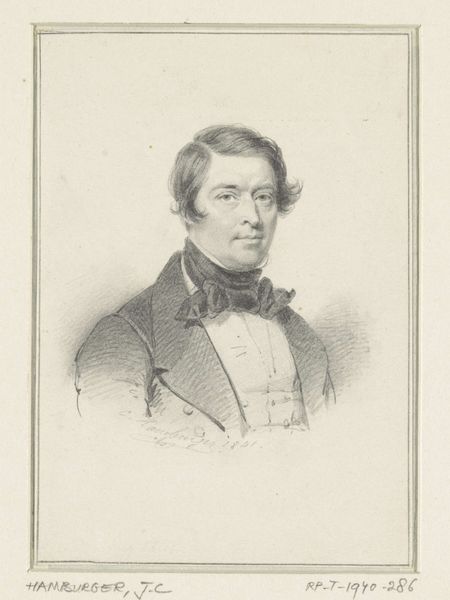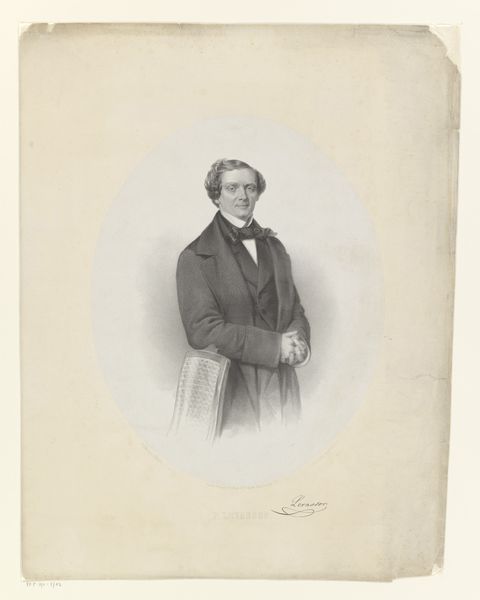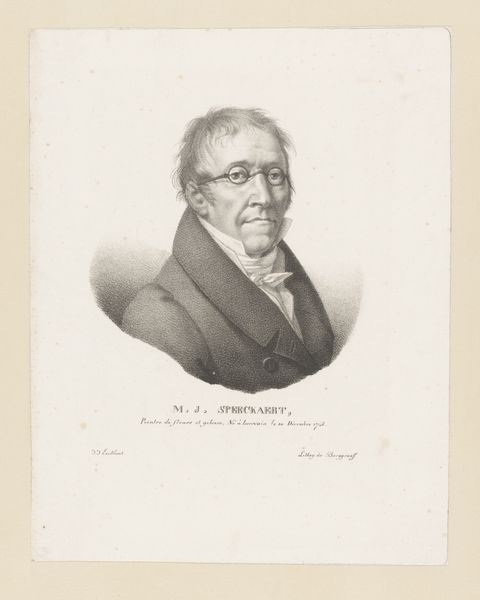
print, engraving
#
portrait
#
neoclacissism
# print
#
engraving
#
realism
Dimensions: height 294 mm, width 231 mm
Copyright: Rijks Museum: Open Domain
Curator: Looking at this print, titled *Portret van Philippe Parmentier,* produced in 1822 by Guillaume Philidor Van den Burggraaff, what immediately strikes you? Editor: Well, it's strikingly ethereal for a portrait. He seems to be emerging from or dissolving into a cloud. The tonal range is subtle. Curator: It is indeed an intriguing depiction. Van den Burggraaff crafted this piece using engraving, a process allowing for detailed and precise lines. Knowing the subject was a sculptor, do you see any of that reflected? Editor: Perhaps the intent gaze? There’s an impression of intelligence, definitely. It is hard to place though. As far as neoclassical artwork goes, where do you place Parmentier as an artist? Is there much recorded about him and the movements around his sculptures? Curator: Absolutely, considering his contributions through a lens of power structures influencing art during this era reveals significant facets. Parmentier existed, arguably, on the periphery of the art world power dynamics; even a piece about him places him within a haze of being, and, through his body of work, he made compelling statements about identity and artistic recognition. There are ways to view how this portrait could be emblematic of the tensions that underscored much of nineteenth-century European identity formation. The fact it’s a print also makes it easily disseminated, thus its reach could be expansive. Editor: A powerful point about the nature of prints during the time. I was looking at his medal— it seems the artist took great pains in illustrating the way light bounces off of the metallic details, thus representing the achievements the piece of metal itself signifies. Is it possible this work subtly interrogates the conventional visual rhetoric? Curator: I agree. The interplay of realism with neoclassicism in that rendering is telling. In conclusion, exploring the print within both its historical context and considering its place relative to discussions of gender, labor, and class brings forward essential inquiries relevant today. Editor: It definitely challenges our assumptions about portraiture and the personhood that it's supposed to signify.
Comments
No comments
Be the first to comment and join the conversation on the ultimate creative platform.
